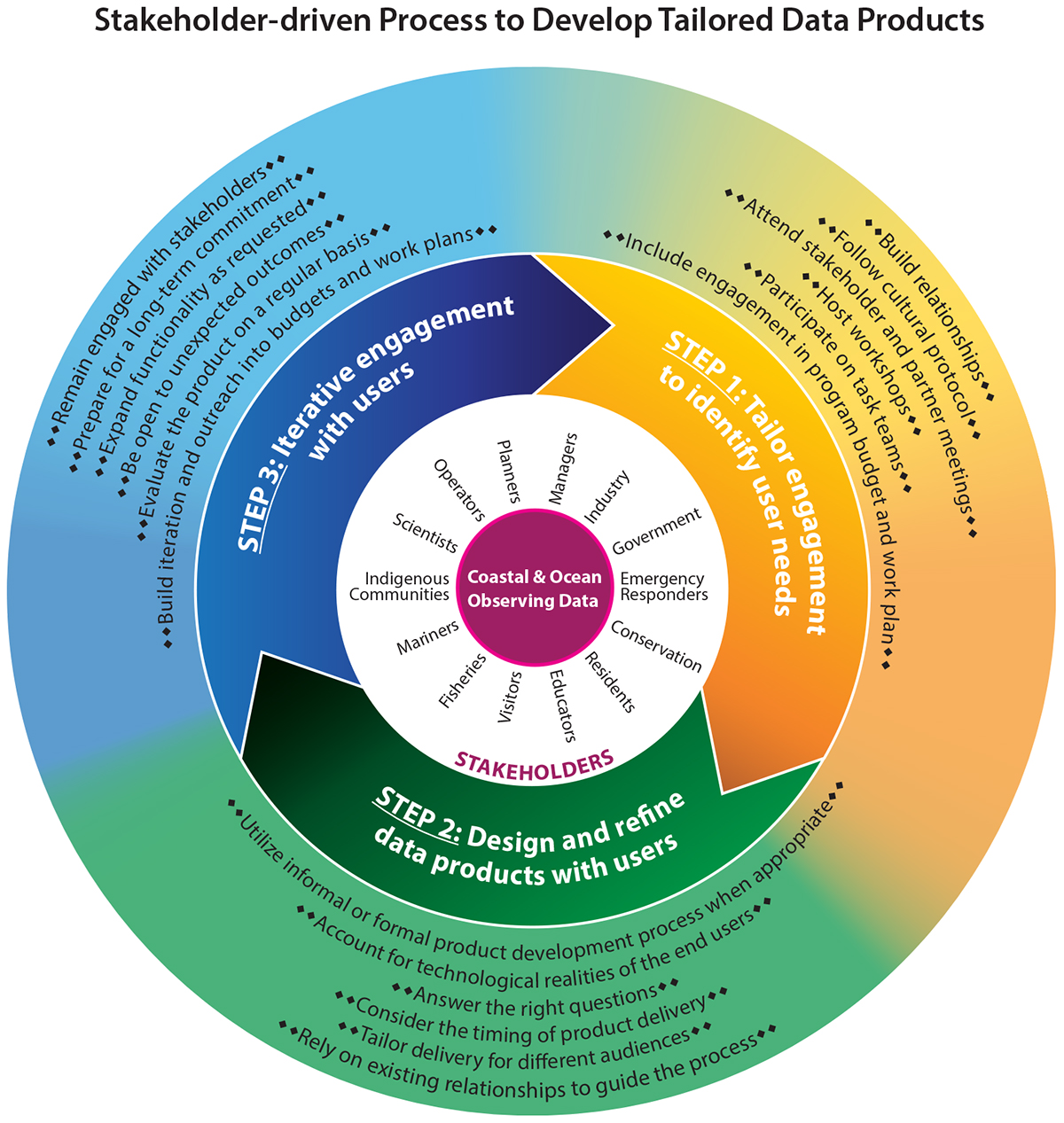Meeting Regional, Coastal and Ocean User Needs With Tailored Data Products: A Stakeholder-Driven Process

Meeting Regional, Coastal and Ocean User Needs With Tailored Data Products: A Stakeholder-Driven Process
Posted June 7, 2019As part of the publication series OceanObs’19: An Ocean of Opportunity, the article Meeting Regional, Coastal and Ocean User Needs With Tailored Data Products: A Stakeholder-Driven Process was recently published in Frontiers in Marine Science. PacIOOS Director and Principal Investigator, Melissa Iwamoto, is the lead author of the publication, who collaborated with co-authors Jennifer Dorton, Jan Newton, Moirah Yerta, James Gibeaut, Tom Shayka, Barbara Kirkpatrick, and Robert Currier.
New coastal and ocean observing stations and instruments deployed across the globe are providing increasing amounts of meteorological, biological, and oceanographic data. While these developments are essential for the development of various data products to inform decision-making among coastal communities, more data does not automatically translate into more benefits to society. Rather, decision-makers and other potential end-users must be included in an ongoing stakeholder-driven process to determine what information to collect and how to best streamline access to information.
The authors present a three-step approach to develop effective tailored data products: (1) tailor stakeholder engagement to identify specific user needs; (2) design and refine data products to meet specific requirements and styles of interaction; and (3) iterate engagement with users to ensure data products remain relevant. Any of the three steps could be implemented alone or with more emphasis than others, but in order to successfully address stakeholders’ needs, they should be viewed as a continuum—as steps in a process to arrive at effective translation of coastal and ocean data to those who need it.

The figure illustrates the stakeholder-driven process to develop tailored data products presented in this paper. The process starts in the center, with various stakeholders and their interactions and needs related to coastal and ocean observing data. Starting here is a reminder to first set the intention to operate a stakeholder-driven process. The three steps in the next rung of the image represent the three steps of this iterative, non-linear process—a continuum in which the three steps overlap and blend into each other as well as repeat. The outer rung includes the various elements or best practices to draw from when working through the various stages of this process.
Examples from the Regional Associations of the U.S. Integrated Ocean Observing System (IOOS), the Texas General Land Office, and the Vanuatu Meteorology and Geo-hazards Department (VMGD) are woven throughout the discussion. These vignettes illustrate the value of this stakeholder-driven approach and provide a sample of the breadth of flexibility and customizability it affords.
Download the poster of this paper.







